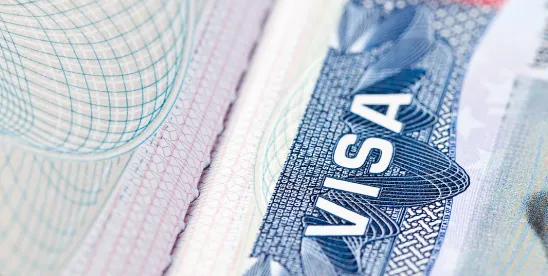On March 25, 2025, U.S. Citizenship and Immigration Services (USCIS) announced that the H-2B cap for the second half of fiscal year (FY) 2025 was met on March 5, 2025. Employers seeking to employ H-2B workers to meet their labor demands will need to hire cap-exempt workers or H-2B workers who meet the criteria under the supplemental allocation.
Quick Hits
- USCIS announced that the second half of the H-2B cap was met for FY 2025 on March 5, 2025.
- The announcement stated that cap-subject H-2B petitions received on or after March 6, 2025, would be rejected.
- The agency will continue to accept properly filed cap-exempt petitions and petitions for workers qualifying under the supplemental allocation.
The H-2B program allows employers to hire foreign national workers to meet their temporary, seasonal, one-time occurrence, or peak load nonagricultural labor needs when there is a shortage of willing, able, and qualified U.S. workers. Each year, 66,000 new H-2B visas are available under the annual cap. The cap is split evenly between the first and second halves of the fiscal year.
For FY 2025, the U.S. Department of Labor (DOL) and U.S. Department of Homeland Security (DHS) allocated an additional 64,716 H-2B visas for FY 2025 due to an increased need for H-2B workers. Under this supplemental allocation, additional H-2B cap spots were allocated for citizens of certain countries and returning H-2B workers who were previously counted under the caps of prior years.
Cap-Exempt H-2B Workers
Employers seeking to fill H-2B spots for the remainder of 2025 can sponsor cap-exempt H-2B workers or petition to use the supplemental allocation.
Workers exempt from the congressionally mandated H-2B cap include the following categories:
- Individuals who are currently in the United States working in H-2B status and wish to extend their stay, amend the terms of their employment, or change employers
- Individuals who have already been counted against the H-2B cap in the same fiscal year (FY 2025)
- Individuals who will work as fish roe processors, fish roe technicians, or fish roe processing supervisors
- Individuals who will be employed in the Commonwealth of the Northern Mariana Islands or Guam
Supplemental Allocation
Employers may also petition to hire workers under the supplemental allocation. To qualify for the supplemental visas, the petitioning employer must attest that they are suffering or will suffer irreparable harm if they are not able to hire H-2B workers. The workers must qualify under the returning workers allocation or the country-specific allocation.
- Under the returning workers allocation:
- 44,716 visas are reserved for individuals who were issued a H-2B visa or held H-2B status in any of the past three fiscal years, regardless of nationality.
- The returning worker visas are divided between the first half of FY 2025, the early second half of FY 2025, and the late second half of FY 2025, depending on the worker’s start date.
- Under the country-specific allocation:
- 20,000 H-2B visas are reserved for nationals of Colombia, Costa Rica, El Salvador, Ecuador, Guatemala, Haiti, and Honduras. These individuals do not need to be classified as returning workers.
The speed and regularity with which the annual cap is met underscores the essential role of H-2B workers in the economy. H-2B workers are employed in diverse industries across the United States, from hospitality and landscaping to fishing and manufacturing. In the second half of FY 2024, the cap was met on March 7, 2024.
Looking Ahead
Employers relying on H-2B workers may need to look for cap-exempt workers, returning workers, or workers from specific countries to meet their labor demands. Employers may also want to begin planning for the FY 2026 H-2B cap, as demand continues to increase in this visa category.




 />i
/>i
